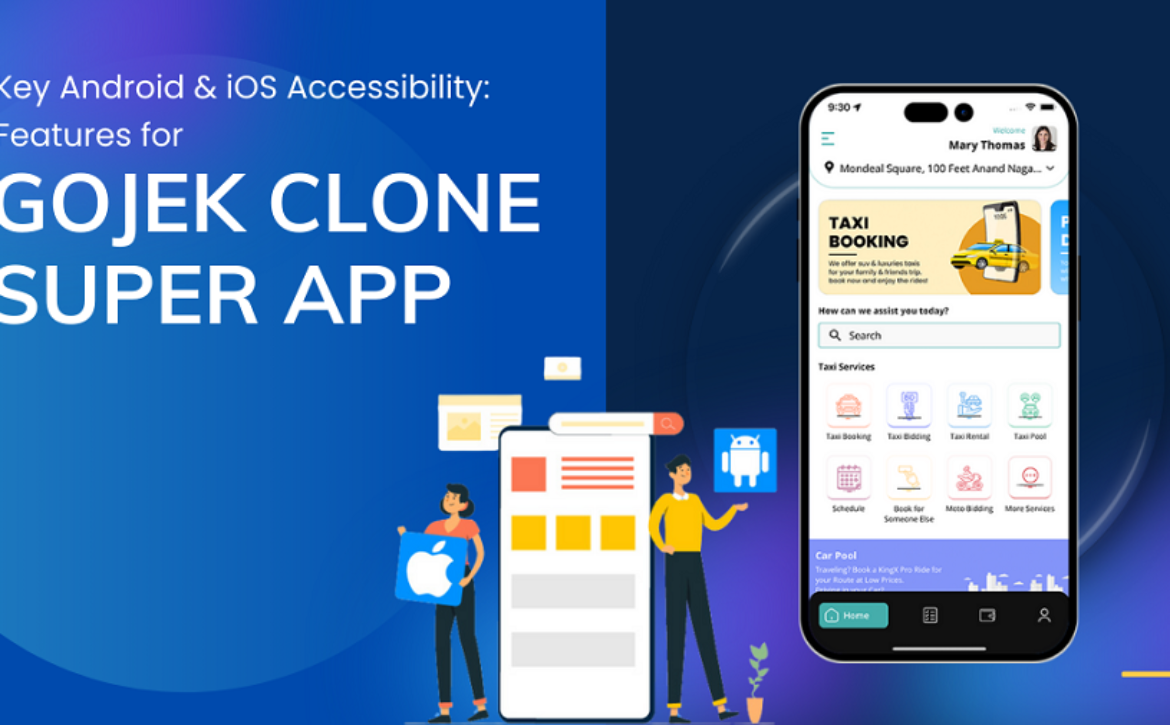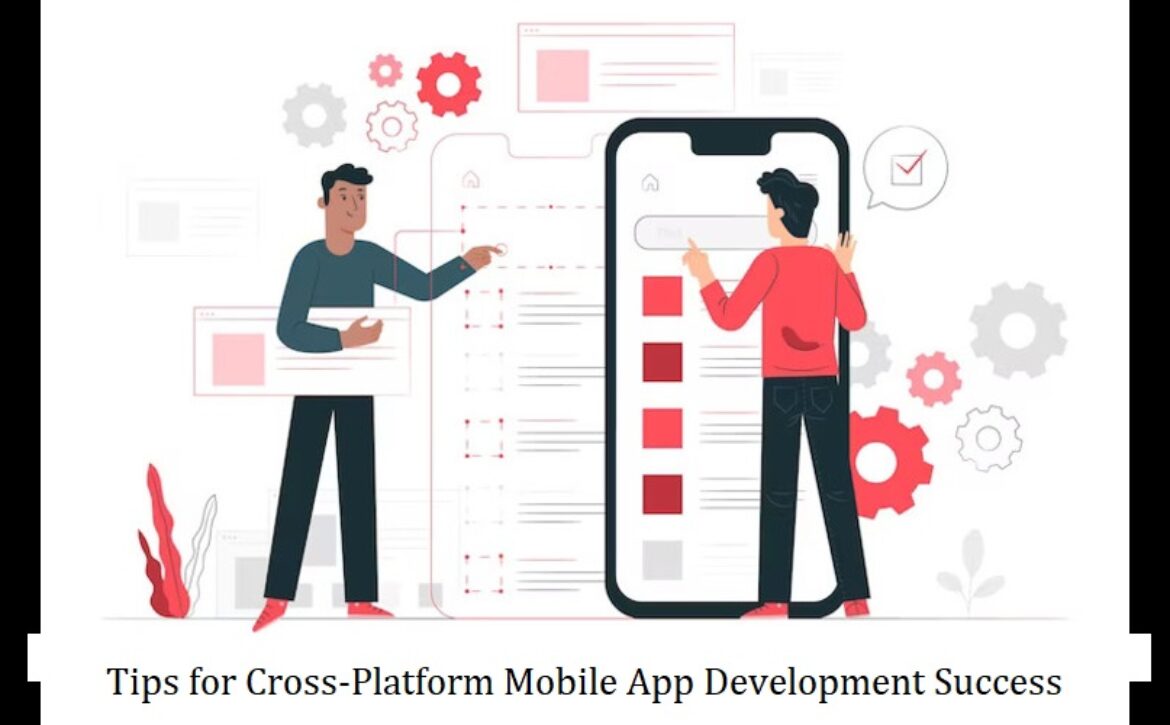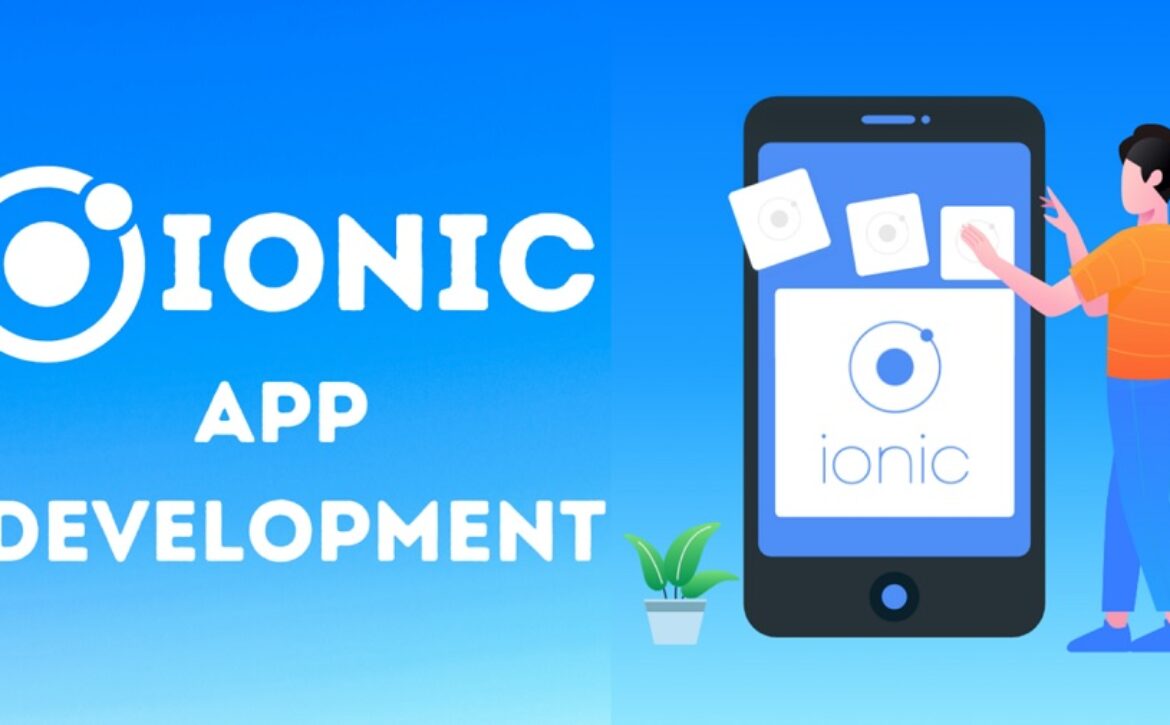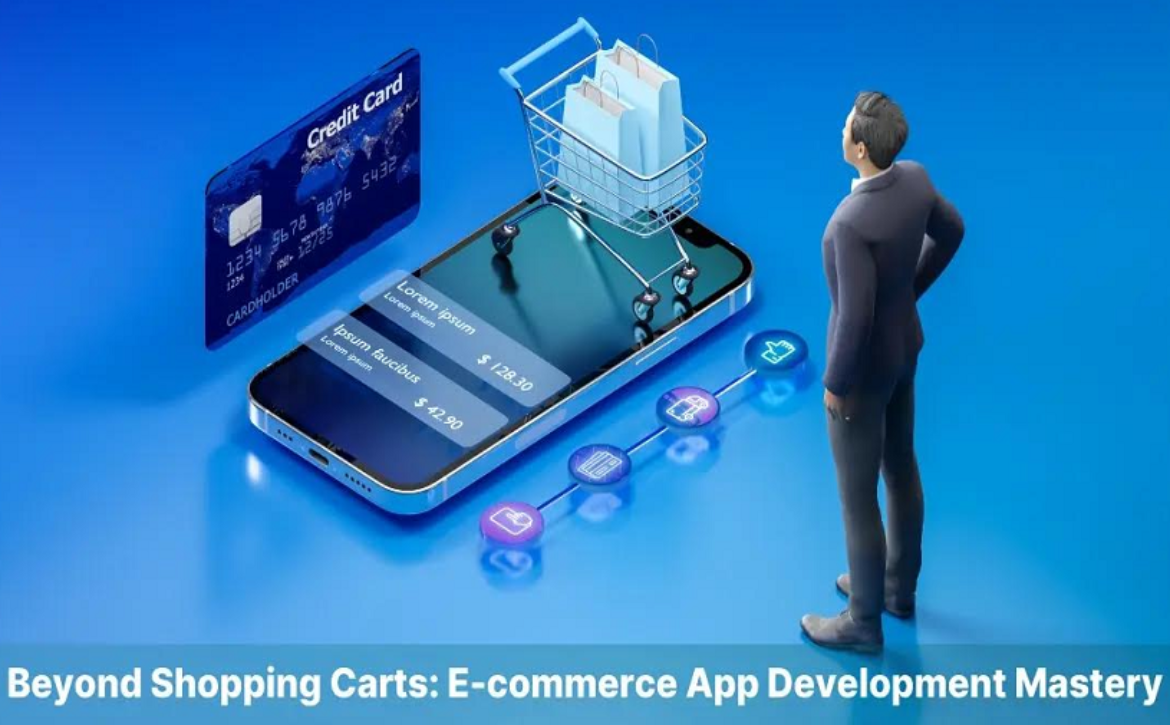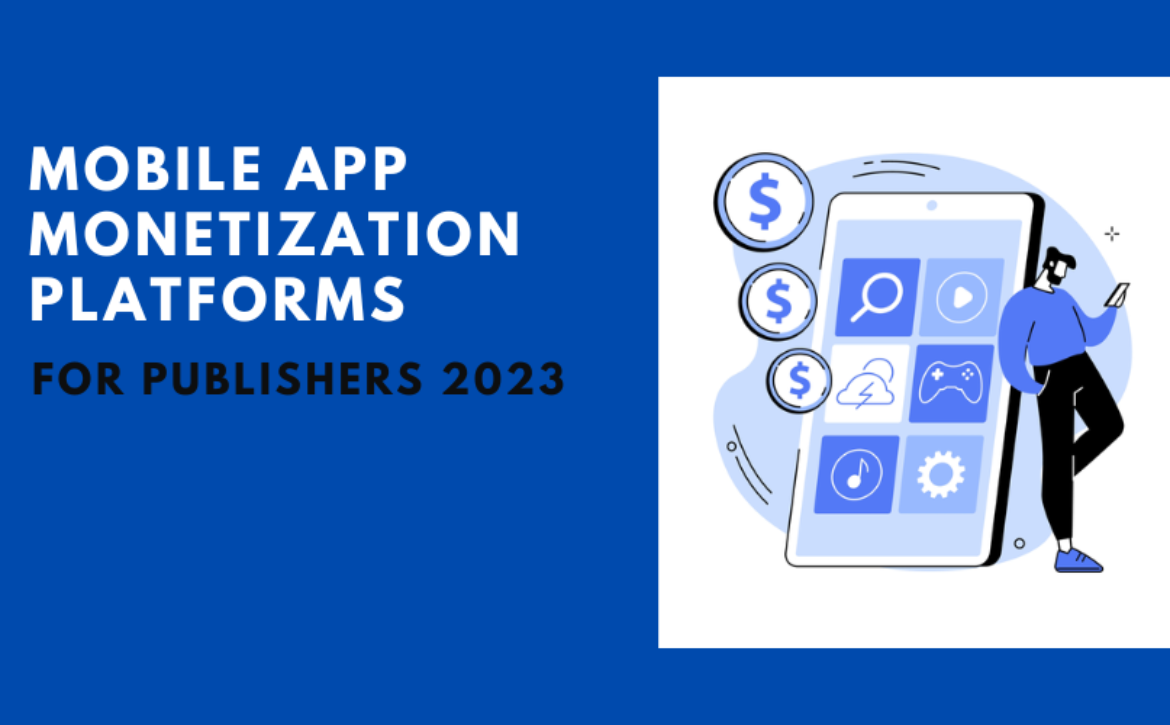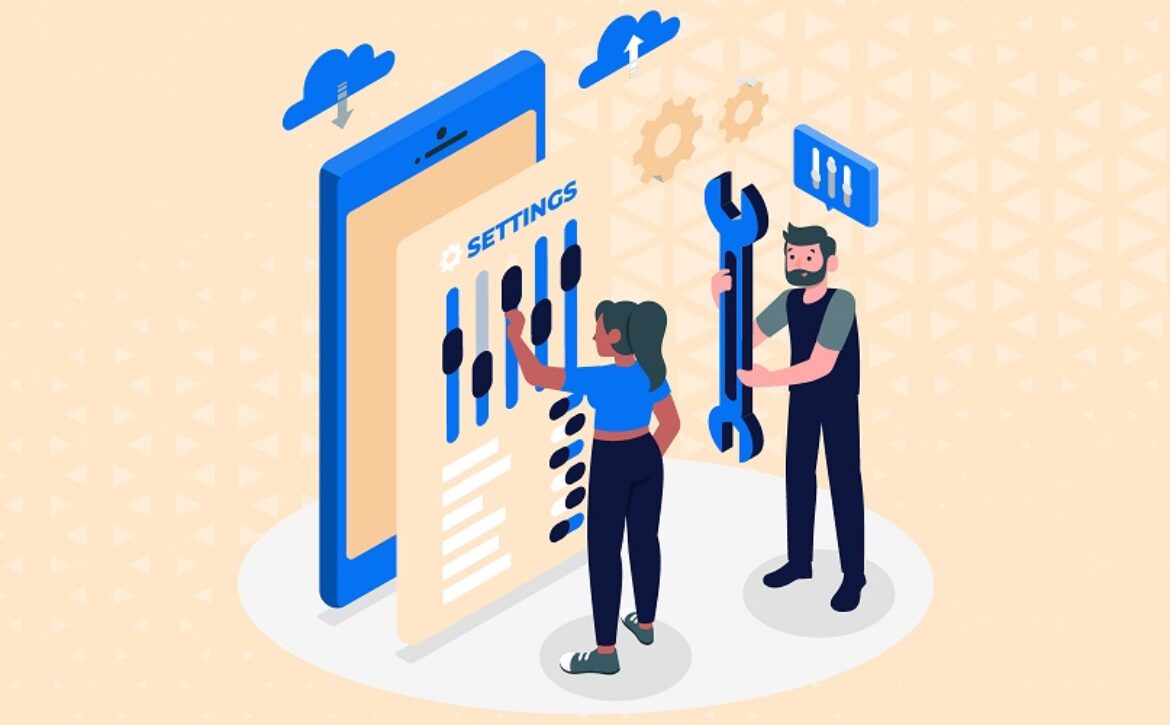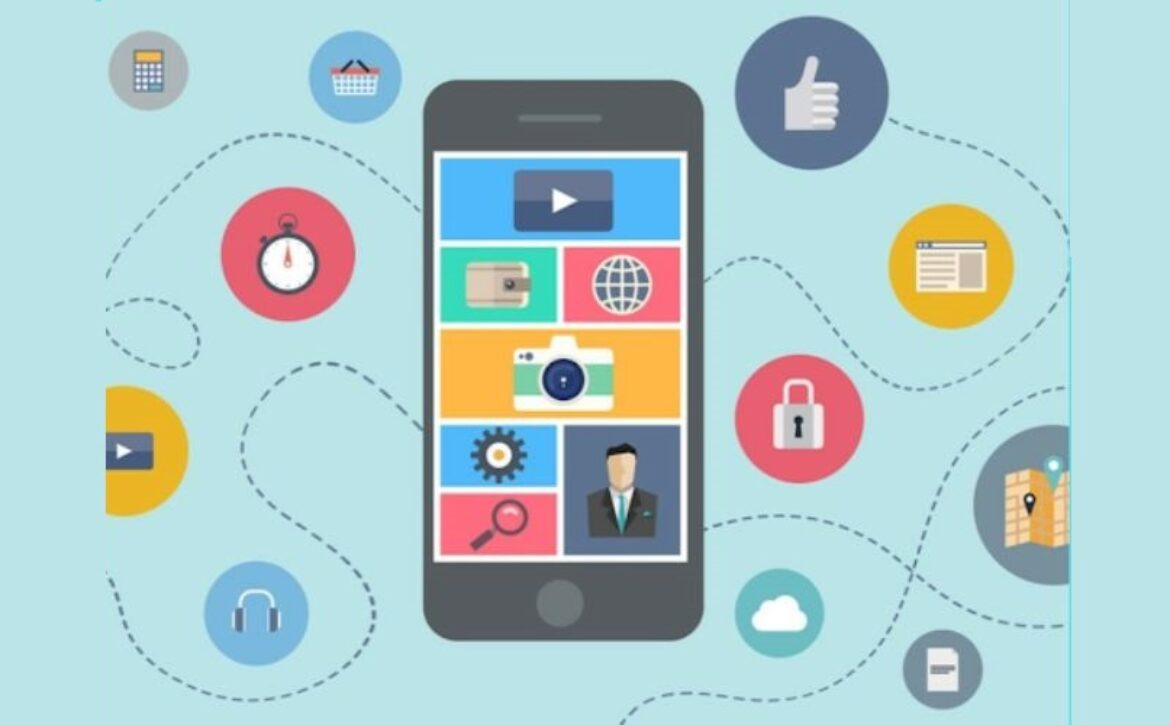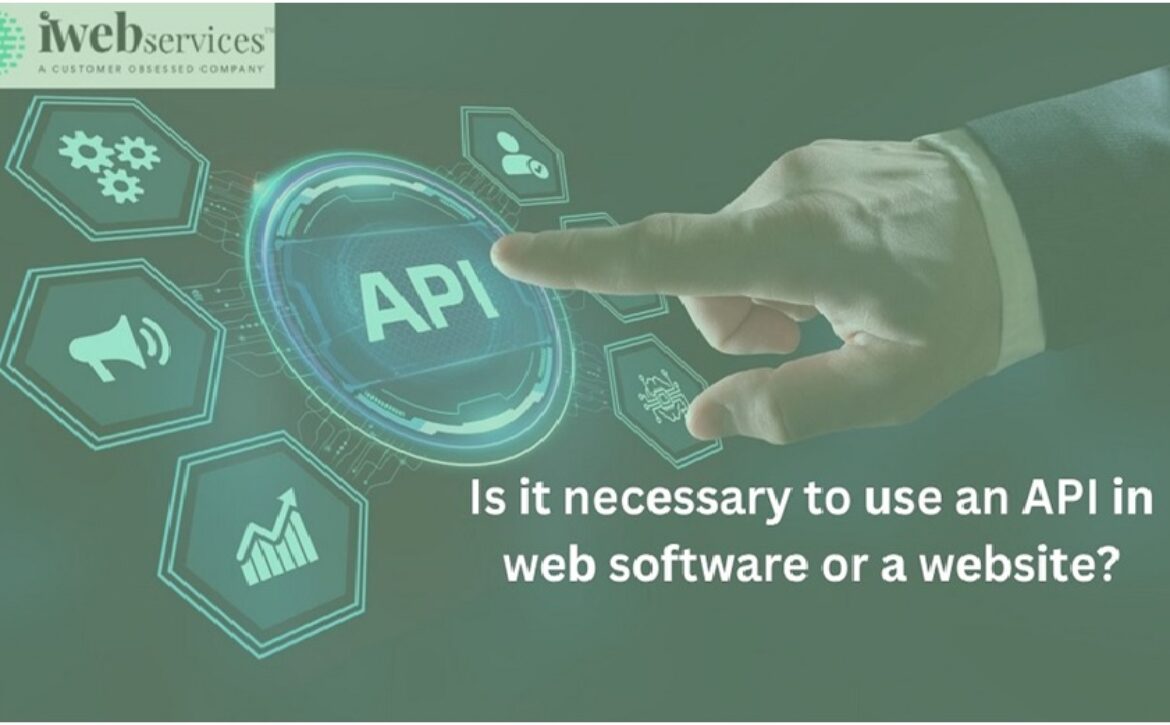With the smartphone age, versatile applications have ended up being nearly essential needs to individuals. A fundamental portion of our ordinary lives. Through this clients can download and utilize apps on diverse gadgets at the same time. Different gadgets and frameworks, substances, and versatile application improvement. Ventures ought to work to give the required openness and adequacy of their apps. Over different stages. The multiplatform portable app advancement gives the reply, giving designers the capability to make their code once and serve it over diverse stages. In any case, victory in cross-platform advancement includes intensive thought. Organized arranging, execution, and recognition of best hones. This direct is approximately revealing the world. Twelve essential suggestions warrant thought for the consistent execution of a portable app on diverse platforms.
Cross-platform portable app advancement has gotten far-reaching footing because of its capacity to streamline the change handle and achieve a broader group of onlookers. In any case, it presents its cluster of obstructions and possibilities. In this segment, we will in brief conversation almost the significance of cross-platform improvement and offer a diagram of the requesting circumstances and conceivable outcomes it presents.
Importance of Cross-Platform Portable App Development
————————————–
Cross-platform enhancement licenses offices to harvest a much more extensive target group of onlookers with the asset centered on clients on different running structures, along with iOS, Android, and others. By contributing to cross-platform portable app improvement offerings, bunches can reduce change time and charges indeed by guaranteeing their app keeps an ordinary client encounter at a few points of greatly great structures. In addition, move-platform improvement cultivates code reusability, disentangles conservation, and animates time-to-market for businesses looking for to capitalize on developing showcase opportunities.
Challenges and Opportunities
————————————–
While cross-platform advancement offers various endowments, it moreover postures various requesting conditions, which comprise standard in general execution optimization, platform-specific plan concerns, and making beyond any doubt compatibility over contraptions and working structures. Be that as it may, with the right procedure and adaptation, those requesting circumstances may have prevailed, opening openings for designers to make momentous, function-rich apps that resound with clients all through exceptional structures.
1. Select the Right Cross-Platform Framework
Selecting the adjusted move-platform system is basic for the victory of your portable app. A shape of a recognized system exists, each gloating unmistakable capabilities and endowments. In this segment, we’ll talk about how to look at and choose the legitimate system for your challenge.
Evaluate Well known Frameworks
– Respond Local: Made by Facebook, Respond Local enables builders to create versatile apps with the utilization of JavaScript and Respond. It gloats a colorful biological system of libraries and organized aids.
– Ripple: Built through Google, Shudder serves as a UI toolkit for creating natively compiled programs for portable, web, and computing gadgets from a bound-together codebase. It gives you high-constancy rendering and customizable widgets.
– Xamarin: Beneath the stewardship of Microsoft, Xamarin enables builders to fashion neighborhood iOS, Android, and Windows apps utilizing C# and . NET. It offers confirmation to platform-particular APIs and is inborn in general performance.
Consider Key Factors
When choosing a system, take into account components that incorporate execution, community direct, learning bend, and integration with show hardware and innovations. Assess each system based on your undertaking necessities and long-term desires.
Highlight Key Features
Highlight the key highlights and benefits of the chosen system to your versatile app advancement company’s offerings, such as code reusability, warm reloading, and neighborhood by and large execution. Emphasize how those capacities make commitments to the advancement method and by and large accomplishment of the apps conveyed with the help of your office, drawing in capacity clients in look of pass-platform versatile app change services.
2. Arrange for Plan and Client Experience
Design and client interface unpredictably weave right into a portable app’s victory. When developing a pass-platform app, it is basic to arrange and optimize the UI/UX for different frameworks indeed keeping consistency over contraptions. In this stage, we are going to talk about quality hones for planning pass-platform apps.
Understand Platform-Specific Plan Guidelines
Each stage has its exceptional claim set of organized recommendations and necessities. Familiarize yourself with structures like iOS and Android to secure their arrange measures, route styles, and interface components. Staying to those tips guarantees your app’s local sense on each platform.
Optimize UI/UX for Distinctive Screen Sizes
Mobile contraptions extend in show measurements and resolutions. Plan your app’s UI/UX to be responsive and versatile, guaranteeing that it shows up and plays well amid elite show screen sizes. Utilize methodologies like liquid formats, versatile resources, and versatile typography to make a proceeding client experience.
Ensure Consistency Over Platforms
While advancing your app’s format to each stage is pivotal, endeavor consistency in branding, route, and interaction styles. Keep up a cohesive character and person encounter for the length of frameworks indeed as regarding platform-unique traditions. This approach complements convenience and makes the app more commonplace to customers.
3. Optimize Execution and Responsiveness
Performance is a fundamental thing in the accomplishment of any versatile app. Clients anticipate quick stack occurrences, smooth movements, and responsive intuition. In this fragment, we will talk about methodologies for optimizing normal execution and responsiveness in go-platform apps.
Implement Effective Coding Practices
Write smooth, green code that takes after uncommon hones and coding necessities. Optimize calculations, diminish conditions, and maintain a strategic distance from all-inclusive execution bottlenecks. Use platform-unique APIs and capabilities to maximize general execution while holding code reusability.
Utilize Platform-Specific Optimizations
Each stage offers specific optimization strategies and is equipped for making strides in the app’s general execution. Utilize highlights like pre-compilation, Ahead-of-Time (AOT) compilation, and nearby code integration to optimize your app’s in general execution at each stage. Profile and look at your app to get its ranges for change and optimization.
Test Execution Over Devices
Test your app’s execution on different contraptions with unmistakable equipment specs and working contraption forms. Utilize profiling apparatuses to confirm CPU utilization, memory admissions, and rendering widespread execution. Recognize any common execution issues or bottlenecks and optimize your app for this reason.
4. Modularize Codebase for Reusability
Modularizing your codebase is fundamental for advancing reusability, adaptability, and viability. In this portion, we’re going to talk about the way to separate your code into reusable components and implement secluded structure patterns.
Divide Code into Reusable Components
Break down your app’s capability into smaller, reusable components. Typify related legitimate judgment, UI components, and measurement models into secluded components that can be without trouble reused amid unmistakable components of your app. This approach streamlines advancement, attempting out, and upkeep.
Implement Secluded Engineering Patterns
Adopt secluded structure styles like Model-View-Controller (MVC), Model-View-ViewModel (MVVM), or Flux to set up your codebase efficiently. Partitioned concerns, decoupled conditions, and set up smooth impediments among added substances. This permits for way better code endeavor, adaptability, and testability.
Facilitate Code Sharing Over Platforms
Maximize code sharing among stages by way of abstracting platform-unique suitable judgment into shared modules or libraries. Recognize commonplace functionalities that can be carried out as rapidly as possible and reused all through stages. By minimizing duplication and offering code reuse, you seem to streamline change and guarantee consistency amid systems.
5. Prioritize Testing and Quality Assurance
Testing is basic for figuring out creepy crawlies, guaranteeing usefulness, and conveying a brilliant app. In this stage, we are going to talk about extraordinary hones for endeavoring out and fine confirmation in cross-platform portable app development.
Implement Computerized Testing
Automate attempting out strategies to guarantee consistent and intensive test scope. Compose unit checks, integration exams, and UI checks to approve usefulness and conduct over uncommon structures. Utilize endeavoring systems and instruments that help cross-platform endeavoring, together with Joke, XCTest, and Espresso.
Conduct Careful Testing
Test your app on very few gadgets, screen sizes, and strolling contraption varieties to make beyond any doubt compatibility and consistency. Perform relapse checking out after each code trade to hit upon and spare your relapses. Join real-global circumstances and feature times into your testing methodology to discover capability troubles.
Pay Consideration to Ease of Use, Execution, and Security
In expansion to commonsense attempting out, mindfulness of convenience, standard execution, and security testing. Assess the app’s client reveal,
average execution measurements, and security vulnerabilities. Conduct ease of use thinks about, by and large, execution profiling, and assurance reviews to choose out locales for advancement and optimization.
6. Embrace Dexterous Advancement Methodologies
Agile techniques offer collaboration, adaptability, and iterative advancement. In this stage, we’re going to talk approximately the way to attempt Spry hones for bypass-platform versatile app improvement.
Adopt Spry Practices
Accept Dexterous thoughts in conjunction with iterative enhancement, non-prevent comments, and versatile making plans. Break down change obligations into smaller, capacity increases, or sprints. Prioritize capacities based generally on client comments and company rate, mulling over quick era and model.
Break Down Improvement into Sprints
Organize enhancement craftsmanship into regular-length sprints, commonly beginning from one to four weeks. Characterize smooth wants and deliverables for each sprint, centering on conveying incremental expenses to clients. Conduct sprint arranging, each day stand-ups, and sprint audits to tune advancement and adapt to any inconveniences or boundaries.
Foster Collaboration Between Teams
Encourage collaboration among improvement, format, and first-class guarantee bunches inside the course of the enhancement method. Encourage open communique, circulate realistic collaboration, and record sharing. By strolling carefully collectively, bunches can adjust on errand dreams, rate experiences, and supply impressive effects.
7. Screen and Analyze Client Feedback
User comments are profitable for knowing a person’s wishes, choices, and throb components. In this section, we’re going to conversation about the way to procure, have a see at, and act on personal comments to upgrade your move-platform app.
Gather Client Feedback
Collect individual comments using beta discoveries, overviews, assessments, and analytics. Energize clients to offer comments on their considers with the app, collectively with convenience issues, work demands, and widespread execution stresses. Use input channels together with in-app input bureaucracy, social media, and community boards.
Iterate Based on Client Insights
Analyze customer comments to discover out unordinary issues things, patterns, and regions for advancement. Prioritize comments essentially based on their effect on man or lady involvement and commercial organization objectives. Emphasize your app’s format, capability, and common performance-based completely on personal bits of knowledge and tips.
Continuously Move forward the App
Maintain a nonstop comments circle with clients, consolidating their comments into each unused discharge of the app. Discharge overhauls habitually to bargain with customer concerns, present unused capacities, and brighten by and large shopper satisfaction. By taking note of your clients and reacting to their wishes, you can make an additional appealing and cherished app.
8. Remain Upgraded with Stage Changes and Updates
Mobile frameworks are continually advancing, with modern capacities, APIs, and pointers being conveyed routinely. In this portion, we can communicate the significance of remaining up-to-date with stage changes and updates.
Keep Track of Platform-Specific Updates
Stay educated approximately platform-precise upgrades, which comprise modern OS forms, SDK discharges, and stage competencies. Screen designer documentation, discharge notes, and designer sheets for bulletins and overhauls from stage companies.
Ensure Compatibility with the Most recent OS Versions
Ensure that your app remains legitimately suitable with the cutting-edge going-for-walks machine varieties and apparatus setups. Test your app on beta varieties of the most recent OS discharges to find and bargain with any compatibility issues proactively. Upgrade your app’s conditions, libraries, and systems to use unused capacities and enhancements.
Leverage Unused Devices and Technologies
Explore unused contraptions, eras, and systems that can improve your app’s usefulness and normal execution. Remain side by side with venture characteristics and awesome hones in portable app advancement. Test with rising era in conjunction with increased truth (AR), gadget analyzing (ML), and the Web of Things (IoT) to make inventive and compelling critiques.
9. Actualize Cross-Platform Compatibility Testing
Cross-platform compatibility is pivotal for guaranteeing that your app works consistently through first-rate structures and gadgets. In this segment, we’ll talk about extraordinary hones for finding out move-platform compatibility.
Test Over Stages and Devices
Test your app on various contraptions, which comprise smartphones, tablets, and wearable gadgets. Guarantee compatibility with outstanding screen sizes, resolutions, and issue proportions. Test your app on both iOS and Android gadgets to select out and adapt to platform-precise problems.
Ensure Reliable Usefulness and Appearance
Verify that your app carries on always all-through structures in terms of usefulness, buyer interface, and client delight. Test not unordinary app capabilities, together with route, enter controls, and data appear, at a few organized in one-of-a-kind structures to make certain consistency. Address any inconsistencies or irregularities to give a cohesive customer experience.
Address Compatibility Issues Promptly
Identify and adapt to compatibility issues as quickly as they’re found at a few unspecified times in the future of attempting out. Prioritize vital issues that influence app usefulness or client involvement. Work carefully with engineers, creators, and QA analyzers to cure compatibility issues and make certain that the app meets cross-platform compatibility requirements.
10. Center on Security and Information Privacy
Security and data security is vital in portable app advancement, particularly in cross-platform situations in which apps can be uncovered to a broader assortment of dangers. This segment will examine the best hones for making beyond any doubt security and insights protection in skip-platform apps.
Implement Vigorous Security Measures
Incorporate security best hones, which incorporate encryption, verification, and authorization, to guard client data and unstable records. Utilize unfaltering discussion conventions, comprising of HTTPS, to transmit records over the community safely. Actualize security highlights, such as biometric verification and app sandboxing, to watch client privacy.
Adhere to Information Protection Regulations
Comply with realities security arrangements and necessities, along with the Common Information Security Direction (GDPR) and the California Customer Protection Act (CCPA). Get client assent some time recently collecting, putting away, or handling private data. Execute measurements anonymization and pseudonymization techniques to shield a person’s privacy.
Regularly Review for Vulnerabilities
Perform periodic security reviews and defenselessness exams to pinpoint and lighten usefulness security dangers. Utilize a programmed security checking gadget to hit upon vulnerabilities in your app’s codebase and conditions. Remain learned around unordinary assurance dangers and ambush vectors centered on versatile apps and take proactive measures to shield from competition too.
11. Select Persistent Arrangement and Integration.
Continuous integration and sending (CI/CD) streamline the enhancement strategy, permitting builders to provide overhauls to clients quickly and effectively. In this fragment, we are going to talk approximately how to put in drive CI/CD pipelines for move-platform app improvement.
Automate Construct, Test, and Sending Process
Automate the build, take a see at it, and convey it in a way to reduces manual exertion and makes certain normal results. Utilize CI/CD adapt and structures, comprehensive of Jenkins, Travis CI, and CircleCI, to robotize monotonous commitments, which incorporate code compilation, unit finding out, and app signing—Configure robotized pipelines to cause builds and arrangements routinely at whatever point changes are made to the codebase.
Implement CI/CD Pipelines
Set up CI/CD pipelines that encapsulate the entire advancement lifecycle, from code choice to app discharge. Characterize ranges for developing, testing, and conveying the app all through exact situations, which envelop advancement, organizing, and generation. Utilize adaptation oversee structures, which consolidate Git, to control code changes and tune arrangement records.
Ensure Consistent Integration with App Stores
Integrate your CI/CD pipelines with app stores and dispersion structures, which comprise the Apple App Store and Google Play Store. Computerize the approach of uploading app doubles, metadata, and screenshots to app shops. Screen app store clues and accommodation necessities to guarantee compliance and simple app approval.
12. Give Amazing Client Support
Customer help is crucial for cultivating customer joy and dependability. In this stage, we’re going to talk approximately how to give the sublime client back for your go-platform app.
Establish Channels for Client Communication
Create channels for clients to record creepy crawlies, give comments, and are looking for help. Offer different verbal trade channels, together with in-app bolster chat, mail help, and arrange gatherings. Guarantee that clients can without trouble reach out to your help group and get hold of opportune reactions to their inquiries.
Respond Instantly to Client Inquiries
Respond right absent to client requests and help demands to illustrate your commitment to client pride. Set clear anticipations for response occasions and carrier ranges. Utilize computerized reactions and ticketing frameworks to recognize client requests and coordinate them to the best help group individuals.
Demonstrate Commitment to Improvement
Listen to customer input and add it to your app’s improvement guide. Communicate with clients about arranged upgrades, computer infection fixes, and work changes. Appear appreciation for individual comments and contain clients inside the app advancement method. By illustrating a commitment to tending to individual issues and progressing the app involvement, you might develop acknowledgment as genuine and devotion among your client base.
In the Conclusion
Cross-platform portable app advancement gives a few focal points, along with diminished improvement time, broader security, and code reusability. In any case, locks-in in accomplishment in pass-platform advancement calls for cautious making of plans, execution, and adherence to first-rate hones. By taking after the twelve pointers cited in this direct, engineers can make super, feature-rich apps that reverberate with clients over one-of-a-kind structures. Grasp the conceivable outcomes provided with the help of way of circulate-platform enhancement, live up to date with stage adjustments, and prioritize client criticism to continually decorate your app and be effective interior the forceful portable display.

